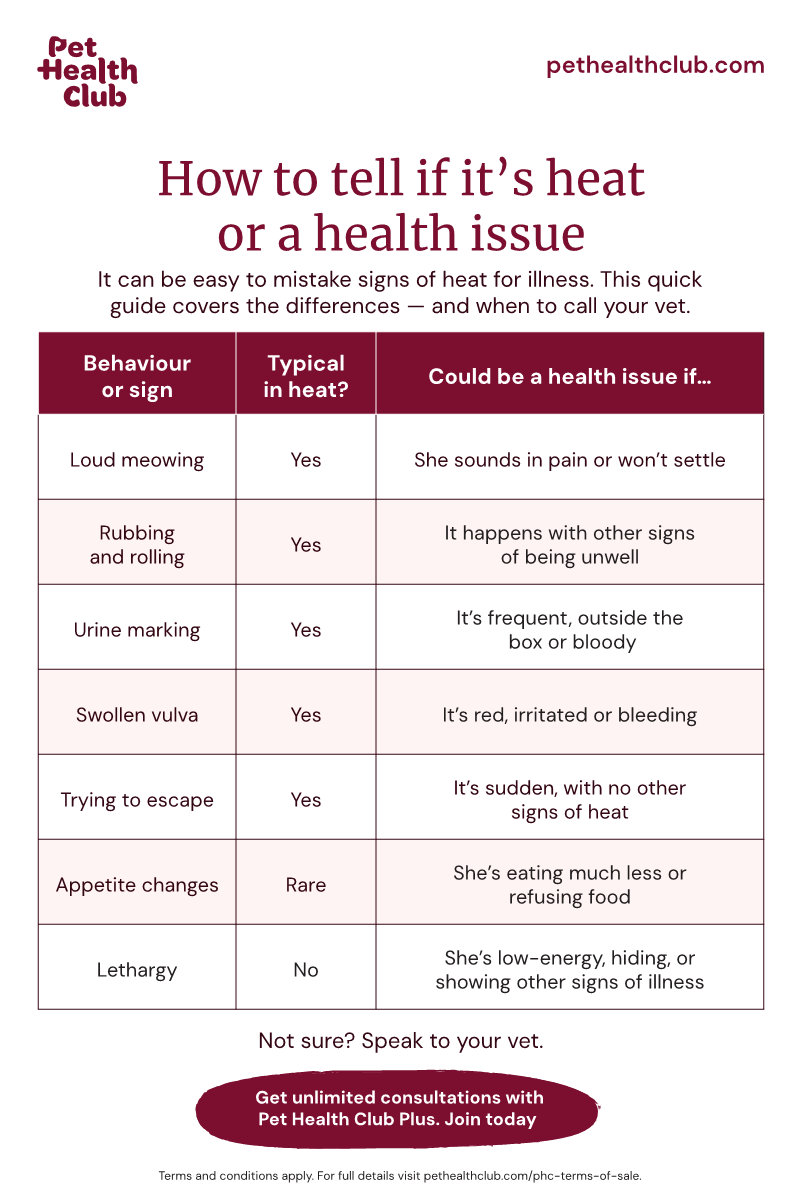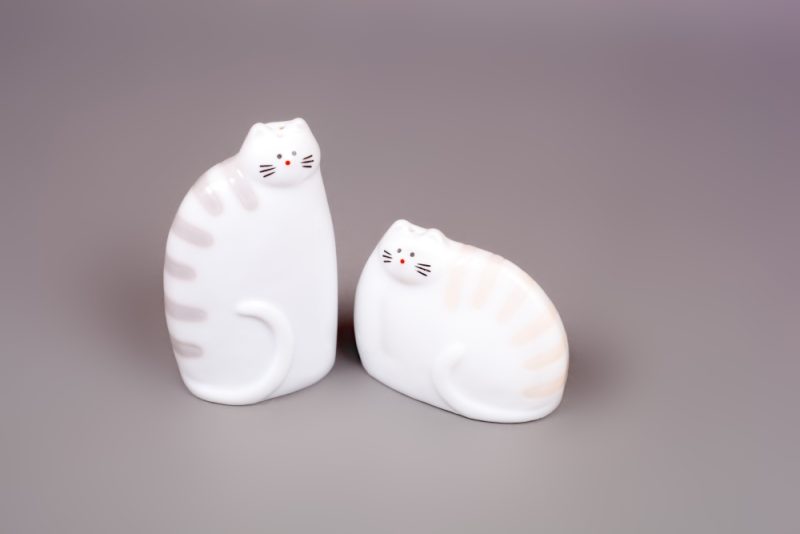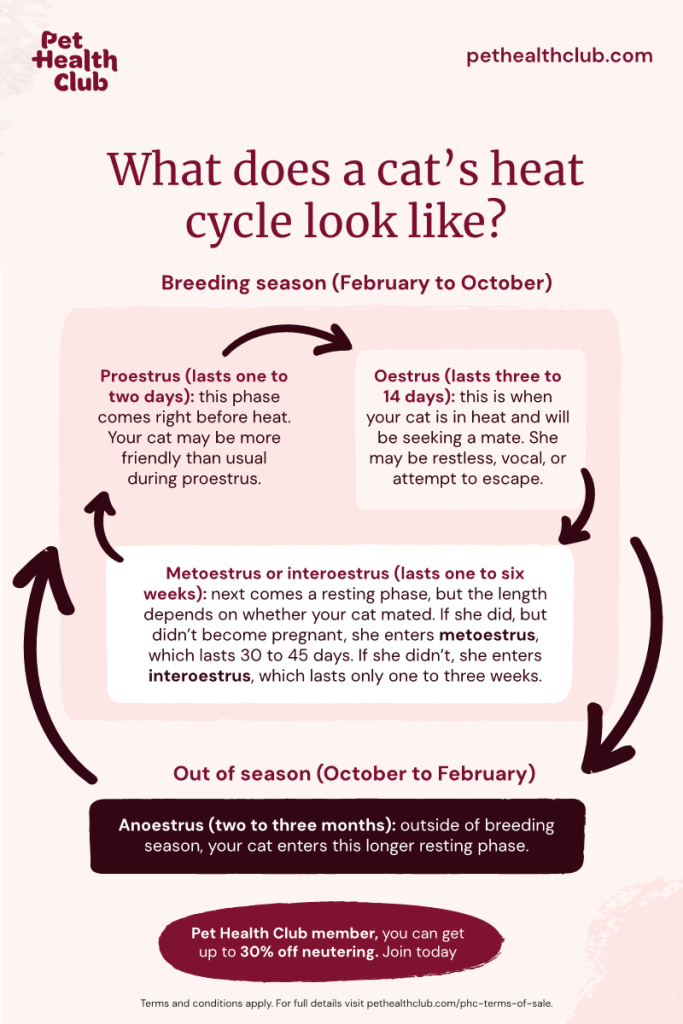Are you wondering if your cat’s mating was successful? It’s natural to feel excited and anxious after your cat has been with a mate.
But how can you be sure if the process worked without waiting weeks? Knowing the signs early on can save you time and help you prepare for what’s next. You’ll discover simple and clear ways to tell if your cat is pregnant.
Keep reading to learn what to watch for and how to take the best care of your furry friend during this important time.
Behavior Changes After Mating
After your cat mates, you might notice some changes in her behavior. These shifts can give you clues about whether the mating was successful. Watching closely can help you understand your cat’s needs and prepare for what comes next.
Increased Affection Or Aggression
Your cat may suddenly become more affectionate, seeking extra petting or cuddles. She might follow you around more than usual, looking for comfort and reassurance. On the other hand, some cats show aggression, becoming more irritable or defensive as their hormones change.
Have you noticed your cat acting out or unusually clingy after mating? This can be a sign that pregnancy might be underway.
Changes In Appetite
Watch for shifts in your cat’s eating habits. Some cats eat more, fueling their growing bodies, while others might lose interest in food at first. These appetite changes can start within a few days after mating and continue during early pregnancy.
Try offering a variety of foods and see if your cat shows clear preferences or increased hunger. This can help you support her health during this critical time.
Restlessness Or Nesting Behavior
You might notice your cat pacing more or searching for quiet, cozy spots. This nesting behavior is a natural instinct as she prepares for kittens. She could start scratching or gathering soft materials to create a comfortable space.
Have you set up a safe, warm area for her to retreat to? Providing a nesting box can reduce stress and help her feel secure.

Credit: www.pethealthclub.com
Physical Signs In Female Cats
Recognizing physical signs in your female cat after mating can help you understand if the process was successful. These signs often emerge within a few days to weeks and provide clues about her condition. Paying attention to subtle changes can save you from unnecessary stress and help you prepare for what’s next.
Swollen Abdomen
A noticeable swelling of the abdomen is one of the earliest physical signs you might observe. This swelling happens as the embryos begin to develop and the uterus expands.
However, not every swelling means pregnancy—it could also be due to bloating or other health issues. Watching for steady growth over time is key. Have you checked your cat’s belly recently to compare size changes?
Nipple Enlargement And Color Change
Within about two to three weeks after mating, your female cat’s nipples may become larger and pinker. This phenomenon, sometimes called “pinking up,” is a strong indication of pregnancy.
Try gently feeling around the nipple area; they should feel slightly firmer. If you notice these changes, it’s a good sign that your cat’s body is preparing to nourish kittens.
Vaginal Discharge
Light vaginal discharge can appear a few days after successful mating. This discharge might be clear, slightly pink, or even a little bloody.
It’s important to distinguish between normal discharge and anything excessive or foul-smelling, which could signal infection. Observing this sign carefully can help you decide if a vet visit is necessary.
Timing Of Pregnancy Symptoms
Timing of pregnancy symptoms in cats helps identify successful mating. Cats show different signs at various stages. Watching these signs closely offers clues about pregnancy progress. Understanding timing helps owners care better for their cats.
Early Signs Within First Week
In the first week, signs are subtle and easy to miss. Cats may seem more tired than usual. Some cats eat less or hide more. Small changes in behavior often appear. These early signs do not last long.
Mid-pregnancy Changes
Between weeks two and four, signs become clearer. The cat’s nipples may swell and turn pink. Appetite usually increases as the body needs more energy. The belly starts to look rounder. Cats may become more affectionate or restless.
Late Pregnancy Indicators
In the last two weeks, pregnancy signs are strong and obvious. The belly grows larger and more noticeable. The cat may begin nesting or finding quiet places. Restlessness and pacing can increase. Milk may start leaking from the nipples as birth nears.
Behavioral Signs In Male Cats
Observing changes in your male cat’s behavior can offer valuable clues about whether mating was successful. These signs are often subtle but meaningful, reflecting natural instincts and responses. Paying close attention helps you understand your cat’s condition without invasive checks.
Territorial Marking
Male cats often increase territorial marking after successful mating. You might notice new urine spots around your home, especially near entrances or windows. This behavior signals the male is protecting his potential offspring’s territory.
Watch for sudden changes in scratching habits too. Your cat may scratch furniture or doors more aggressively to leave scent marks. Have you seen your male cat suddenly become more “territorial” or protective in certain areas?
Changes In Interaction With Female
After mating, a male cat’s attitude toward the female usually shifts noticeably. He may become less aggressive and more relaxed around her, showing signs of contentment. This calmer behavior often indicates successful mating.
Alternatively, your male might display increased grooming of the female, a gentle behavior linked to bonding. If he seems less restless and more settled near the female, it’s a strong behavioral hint. Have you noticed a sudden drop in chasing or fighting between your cats?
When To Consult A Veterinarian
Knowing when to consult a veterinarian after your cat’s mating can make all the difference in ensuring a healthy pregnancy and a smooth experience for both you and your feline friend. Sometimes, signs of pregnancy or health issues can be subtle, and a professional’s insight can give you peace of mind. Let’s look at key moments when reaching out to your vet is crucial.
Confirming Pregnancy
Wondering if your cat is actually pregnant? A vet can confirm pregnancy with a simple physical exam after about three weeks post-mating. You might notice changes like increased appetite or slight weight gain, but only a vet’s checkup can provide certainty.
Waiting too long to confirm can cause stress or missed opportunities for early care. If you’re unsure about the signs, booking a vet visit early saves worry and helps you plan for your cat’s needs.
Addressing Health Concerns
Did your cat seem uncomfortable or sick after mating? Unusual discharge, lethargy, or loss of appetite are red flags. These symptoms could signal infections or complications that need immediate attention.
Don’t hesitate to call your vet if your cat shows any abnormal behavior or physical symptoms. Early intervention often leads to better outcomes for your pet.
Ultrasound And Other Diagnostic Tools
Ultrasounds provide a clear picture of your cat’s pregnancy health, usually done around 25-30 days after mating. This allows your vet to check embryo development and detect any issues early on.
Other diagnostics like blood tests can assess hormone levels or rule out infections. These tools help you understand your cat’s condition better and prepare for what’s ahead.

Credit: www.catster.com
Common Myths About Cat Mating
Many cat owners hear stories about cat mating and pregnancy that are not true. These myths can cause confusion and worry. Knowing the facts helps you care for your cat better. Understanding common myths stops unnecessary stress and wrong actions.
Signs That Don’t Indicate Pregnancy
Some signs are often mistaken for pregnancy but do not mean the cat is expecting. For example, a cat may gain weight for other reasons like eating more or less exercise. Swollen nipples can appear during heat cycles, not only pregnancy. Changes in appetite or mood may happen due to stress or illness, not just pregnancy. These signs alone do not confirm pregnancy.
Misinterpreting Behavior
Cats show many behaviors that owners misread as pregnancy signs. A cat may become more affectionate or restless during heat cycles. These behaviors can look like pregnancy nesting instincts but are not. Vocalizing loudly is common when a cat is in heat, not pregnant. Knowing the difference avoids confusion and helps provide the right care.

Credit: www.youtube.com
Frequently Asked Questions
How Soon Can I Tell If Cat Mating Was Successful?
You can start noticing signs within 1 to 2 weeks after mating. Look for changes in behavior and appetite as early indicators.
What Are The Early Signs Of A Pregnant Cat?
Early signs include increased appetite, morning sickness, and more affectionate behavior. Your cat may also rest more than usual.
Can A Cat Show Signs Of Pregnancy Without Mating?
No, pregnancy signs only appear after successful mating and fertilization. False pregnancy symptoms are rare but possible in some cats.
How Long Does Cat Pregnancy Last After Successful Mating?
Cat pregnancy, or gestation, typically lasts about 63 to 65 days. Monitor your cat closely for any health changes during this period.
Conclusion
Understanding cat mating success is crucial for breeding plans. Signs like increased appetite, affectionate behavior, or nesting can indicate success. Monitor these changes closely. Consult a veterinarian for confirmation if uncertain. Patience is key during this period. Cats have unique ways of showing pregnancy.
Observing them helps in planning for future litters. Stay attentive to their needs. Create a comfortable environment for them. Recognizing these signs ensures a smooth process. Your knowledge grows with experience. Keep learning about feline behaviors. This benefits both you and your furry friends.

Lily Purrington is the founder of MyKittyPicks.com, a cozy corner of the web dedicated to helping cat lovers discover the best cat products, furniture, toys, and home decor ideas.
A lifelong cat enthusiast, Lily shares trusted tips, honest product recommendations, and stylish inspiration designed to keep kitties happy and homes beautiful.
Her mission is simple: to bring together practical advice and purr-fect picks that make life better for cats and the people who love them.







